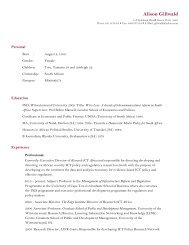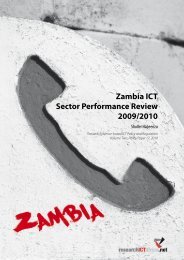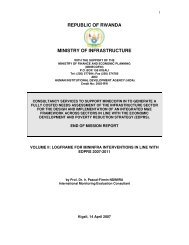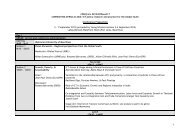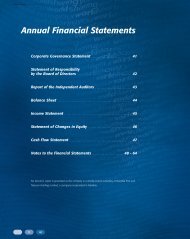Benin Telecommunications Sector Performance Review 2007
Benin Telecommunications Sector Performance Review 2007
Benin Telecommunications Sector Performance Review 2007
Create successful ePaper yourself
Turn your PDF publications into a flip-book with our unique Google optimized e-Paper software.
<strong>Benin</strong><br />
MAP OF THE<br />
REPUBLIC OF BENIN<br />
The capital of <strong>Benin</strong> is Porto-<br />
Novo. Due to its geographical<br />
location, the city of Cotonou<br />
has remained the centre of<br />
economic activities and is the<br />
seat of most of the institutions<br />
in the Republic.<br />
With a total population of<br />
6 769 914 inhabitants of<br />
which 3 485 795 are women<br />
(about 51.5%) and an average<br />
population density of 59<br />
inhabitants per km 2 , <strong>Benin</strong> is<br />
divided into twelve departments<br />
headed by prefects<br />
appointed by the government<br />
during cabinet meetings. It<br />
also has 77 councils including<br />
three with special status<br />
(Cotonou, Porto-Novo and<br />
Parakou), headed by mayors<br />
elected for a five year term.<br />
In February 1990, <strong>Benin</strong><br />
opted for democracy during a<br />
national conference that brought together the significant political players.<br />
A new constitution was voted on 11 December 1990 which created<br />
the executive, legislative and judicial institutions necessary to enable<br />
rule of law. Among these it established the Audiovisual and Communication<br />
High Authority whose role will be discussed later in this document.<br />
RECENT TRENDS IN THE ECONOMY OF<br />
BENIN<br />
For many years the primary sector has accounted for about 40% of the<br />
GDP, the secondary sector for 15% and the tertiary sector for 45%. In<br />
2005, the GDP was estimated at CFAF2 309.1 billion (US$1 818 181,818),<br />
with a growth rate of 3.5%; public investment and gross savings respectively<br />
reached 9.4% and 12.9% of the GDP. Public investment as a percentage<br />
of GDP witnessed a peak during the 2001–2005 period, rising<br />
from 7.8% to 9.4% of the GDP. However, gross savings in relation to the<br />
GDP did not change significantly over the same period, moving from<br />
12.5% in 2001 to only 12.9% in 2005.<br />
10 <strong>2007</strong> <strong>Telecommunications</strong> <strong>Sector</strong> <strong>Performance</strong> <strong>Review</strong>



